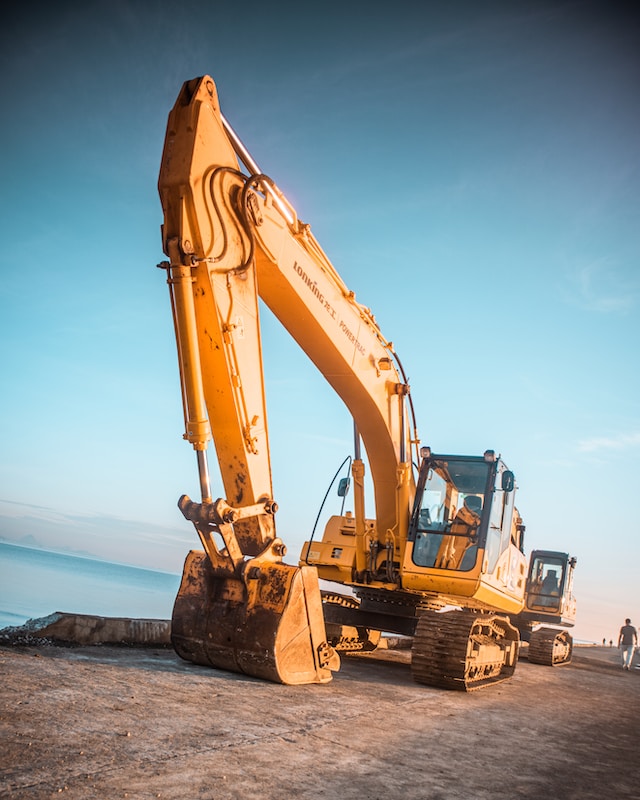Hydro excavation uses less water, resulting in more precise digging and minimal damage to surrounding areas. This reduces the risk of costly repairs and extends the construction season.
Hitting buried pipes and sewer lines can devastate your project and cause an expensive and lengthy repair process. The more accurate hydro excavation method allows crews to avoid these important infrastructures easily.
Less Damage to the Environment
Using the power of water to dig, instead of heavy machineries like diggers or backhoes, reduces the risk of damage to underground pipes and sewer lines. This helps prevent costly damage and repairs that would otherwise be necessary to finish the job.
Additionally, the non-mechanic nature of hydro excavation reduces collateral damage to land and ecosystems surrounding the project area. This also reduces restoration time and costs since crews aren’t required to spend as much time cleaning up the site.
This method also reduces the risk of accidental shovel strikes on existing utilities. These strikes can be dangerous for workers and lead to expensive repair costs. The greater accuracy of hydro excavation allows crews to avoid these strikes and work safely around existing infrastructure.
Less Damage to Underground Pipes and Sewer Lines
Using manual digging and machinery like backhoes to dig holes increases the risk of hitting or damaging underground pipes. With hydro excavation, you can precisely target areas that need a hole and avoid striking and damaging pipes.
This non-destructive process makes it safer for workers to perform daylighting or unearth existing utilities. This can help reduce downtime, repair costs and insurance costs.
Another benefit of this method is that it improves efficiency. It is less labor intensive than traditional methods because you don’t have to remove and move dirt piles around the project area. Instead, the dirt slurry is automatically sucked into a tank and transported away for disposal. This makes cleanup much faster. It also reduces the need for backfilling, which can take days.
Less Labor Intensive
With traditional excavation methods like backhoes or manual digging, it takes a lot of people to get the job done. However, hydro excavation only needs a small team to operate the equipment.
Since this method uses water to dig, no heavy machinery or sharp tools can damage underground pipes and sewer lines. This helps to minimize the risk of accidental strikes, which can result in costly repairs and service interruptions.
Additionally, the slurry of dirt is easily sucked into a large tank on the truck, so there is no need for time-consuming cleanup work. This helps speed up project turnaround times and saves labor and equipment costs. It also reduces liability and insurance costs. This makes hydro excavation an excellent option for construction projects.
More Accurate
Hydro excavation makes crews much more accurate and can dig holes in the ground for specific purposes without accidentally hitting underground pipes or sewer lines. This drastically reduces the chance of costly pipe damage and prevents the need for a restoration crew to fix the problem later.
This method is also safer to use in freezing conditions, as working in cold temperatures can cause mechanical problems for traditional equipment. Hydraulics may become distressed, hoses can crack, and sensitive electronics can fail when using traditional machinery in harsh weather.
Hydro excavation using a vacuum truck and pressurized water instead of machinery also means that workers can remain safe from the digging site, reducing congestion and traffic around the construction area. This excavation method is also much less disruptive from an environmental point of view, as all dirt slurry is stored in debris tanks on the truck and can be easily transported to a designated dumping location.
Less Costly
Hydro excavation requires a smaller crew and less heavy machinery. This can result in a lower labor cost for your project. It also reduces the potential for costly injuries to staff that can lead to worker’s compensation claims.
Using water for excavation results in far less damage to pipes and underground utility lines. This is especially true when performing directional drilling, slot trenching, utility locating, pipe and sewer line installation, daylighting and potholing.
The dirt slurry is sucked into a tank and then easily transported to the nearest disposal location for removal, so no piles of dirt are left around the dig area. This can make the cleanup process easier and faster than with traditional equipment. This can help your project get back on track much sooner.

